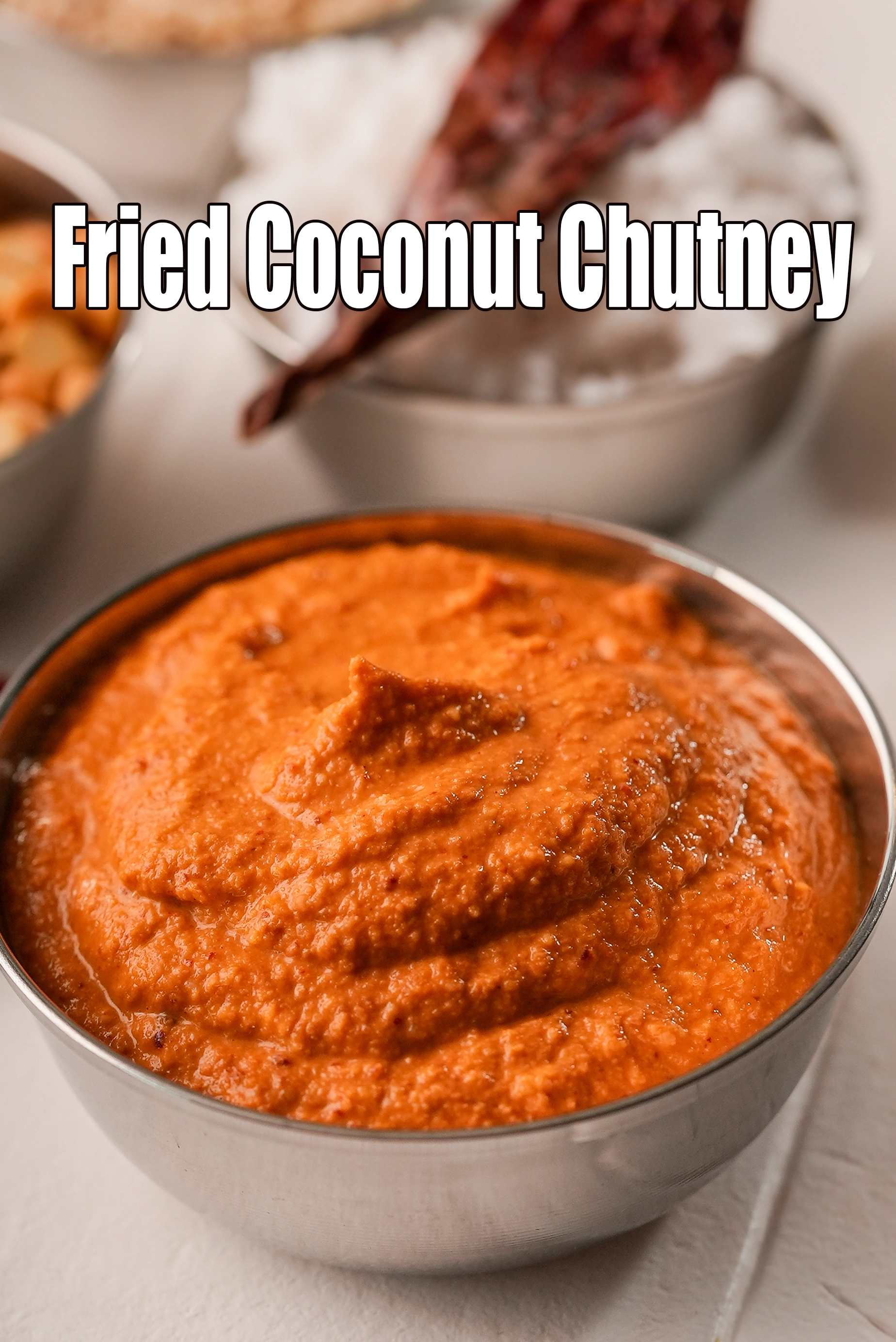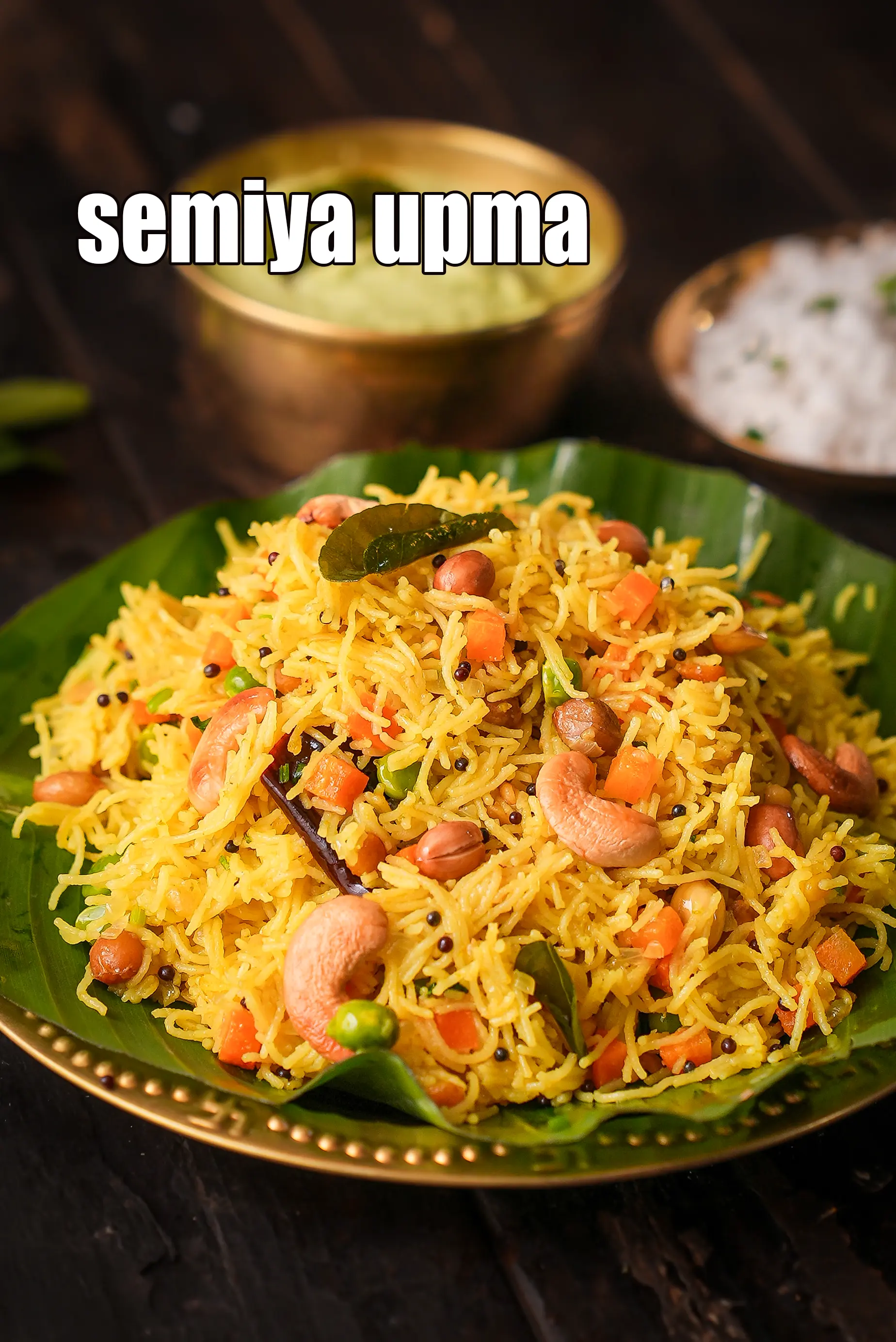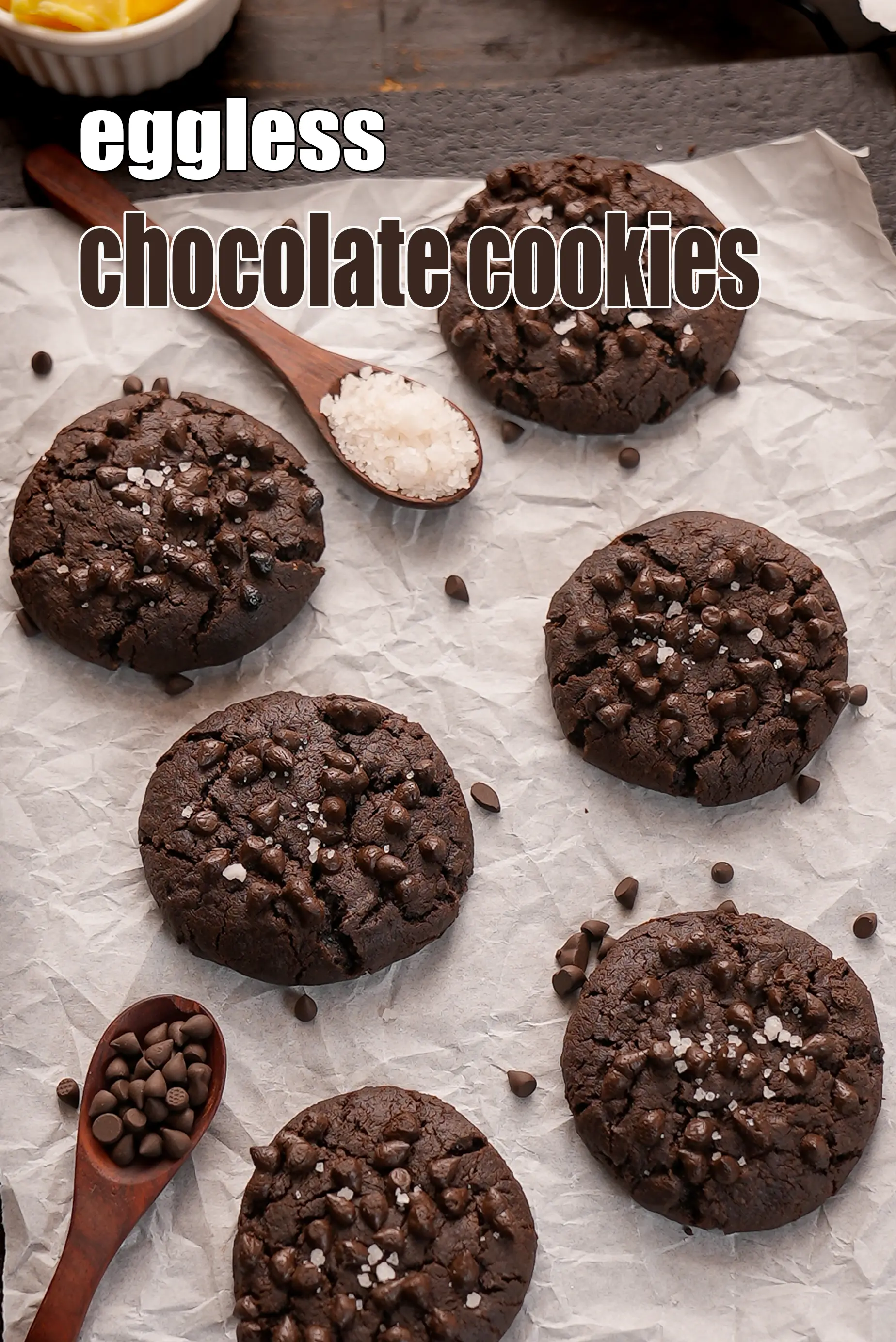You are here: Home> Cuisine > Indian Veg Recipes > South Indian > South Indian Chutney > Fried Coconut Chutney, South Indian Recipe
Fried Coconut Chutney, South Indian Recipe

Tarla Dalal
28 January, 2025

Table of Content
|
About Fried Coconut Chutney, South Indian Recipe
|
|
Ingredients
|
|
Methods
|
|
Like Fried Coconut Chutney
|
|
What are Chutney's?
|
|
How to make Fried Coconut Chutney
|
|
Nutrient values
|
fried coconut chutney | roasted coconut chutney | nariyal chutney | with 15 amazing images.
The mellow flavour of fresh coconut transforms into a more exciting one when it is roasted to a golden brown.
This particular Fried Coconut Chutney (Roasted Coconut Chutney) capitalizes on the rich taste of roasted coconut, which is teamed up with other taste and texture enhancers like roasted dal, tamarind and red chillies.
It is quite an easy chutney, but has a totally different flavour from the soft fresh coconut chutney. Fried Coconut Chutney (Roasted Coconut Chutney) goes well with any South Indian tiffin, such as idlis or dosa.
It is not unusual to see people enjoying Roasted Coconut Chutney with puri, chapati, Lemon Rice or just plain steamed rice topped with ghee.
Since the coconut is roasted, this chutney stays good for quite a few hours, and can be safely packed in the dabba for lunch.
Enjoy fried coconut chutney | roasted coconut chutney | nariyal chutney | with step by step photos given below.
Fried Coconut Chutney, South Indian Recipe recipe - How to make Fried Coconut Chutney, South Indian Recipe
Tags
Preparation Time
10 Mins
Cooking Time
15 Mins
Total Time
25 Mins
Makes
1 cup.
Ingredients
For Fried Coconut Chutney
1 cup freshly grated coconut
3 tbsp chana dal (split Bengal gram)
1 1/2 tbsp urad dal (split black lentils)
5 whole dry Kashmiri red chilli , broken into pieces
2 tbsp tamarind (imli)
1 tbsp coconut oil or any other refined
salt to taste
Method
For fried coconut chutney
- To make fried coconut chutney, combine the chana dal, urad dal, red chillies and tamarind in a broad non-stick pan and dry roast on a medium flame for 4 minutes or till they turn light pink in colour or till the flavour releases, while stirring continuously. Remove and kee
- Heat the oil in the same broad non-stick pan, add the coconut and sauté on a medium flame for 7 minutes or till it turns golden brown in colour, while stirring continuously. Keep aside.
- When cooled, combine all the ingredients together with salt and ¾ cup water, blend in a mixer till coarse.
- Store the fried coconut chutney in an air-tight container and use as required.
fried coconut chutney | roasted coconut chutney | South Indian nariyal chutney | Video by Tarla Dalal
Fried Coconut Chutney, South Indian Recipe recipe with step by step photos
-
-
Like fried coconut chutney | roasted coconut chutney | nariyal chutney | then check out our collection of chutney recipes from chutney's used in Indian chaats like Ragda Pattice to South Indian chutney for Idlis and Dosas.
- Coconut Chutney
- Dry Garlic Chutney for Vada Pav
- Chilli Garlic Chutney for Ragda Pattice
-
Like fried coconut chutney | roasted coconut chutney | nariyal chutney | then check out our collection of chutney recipes from chutney's used in Indian chaats like Ragda Pattice to South Indian chutney for Idlis and Dosas.
-
-
What are Chutney's? Chutneys add value to any dish. They can be used as flavoring substances, toppings or accompaniments, but they enhance the taste of the dish in some way or the other. There are tongue-tickling tangy chutneys, such as the tamarind based ones, as well as soothing chutneys that usually use coconut as the base. Normally, one chooses a chutney that complements or balances the taste of the dish it is used in or served with.
There are different types of chutneys – wet chutneys and dry chutneys. While most wet chutneys are the most delicious when freshly made, some wet chutneys can also be kept in the fridge and used for a couple of days. Chutneys like the Coconut Chutney or Coriander Chutney are usually made fresh, to be served with idlis, dosas and upmas. They are simple and quick, with a balanced flavor. Others like the Tomato Chutney are a little more elaborate, with a pulpy texture and a tangy taste that gives the main dish a flavorful boost. Peppy, spicy delights like the Meetha Chutney and Khajur Imli ki Chutney can be made and preserved for a while, to be served with scrumptious samosas and pakodas or to be used in the preparation of chaat items. The famous Green Chutney is another must-learn dish, indispensable in the preparation and serving of North Indian snacks.
South Indian and Maharashtrian cuisine are also well-known for their collection of dry chutneys. Dry chutneys are basically spice powders that can be served along with rice or snacks. The Dry Garlic Chutneyfrom Maharashtra is a powerful combo of garlic, dried coconut and red chilli, which adds a spicy note to snacks like Vada Pav. You can even go all out and make yourself a chatpata open sandwich with a sprinkling of Dry Garlic Chutney powder! If you come down South, you will be met by many more such dry chutney powders like the Milagai Podi, Curry Leaves Powder and Coconut Powder, all of which go well with South Indian snacks like idli and dosa. Some of the chutney powders can also be mixed with hot rice and ghee and served as a quick meal with papad and curd.
-
What are Chutney's? Chutneys add value to any dish. They can be used as flavoring substances, toppings or accompaniments, but they enhance the taste of the dish in some way or the other. There are tongue-tickling tangy chutneys, such as the tamarind based ones, as well as soothing chutneys that usually use coconut as the base. Normally, one chooses a chutney that complements or balances the taste of the dish it is used in or served with.
-
-
For preparing the fried coconut chutney | roasted cocnut chutney | nariyal chutney | in a broad non-stick pan, take the chana dal.

![]()
-
Add the urad dal.

![]()
-
Also, add the red chillies. Remove the stem and break the chillies into pieces before adding.

![]()
-
Add the tamarind.

![]()
-
Mix well and dry roast on a medium flame for 4 minutes or till they turn light pink in colour or till the flavour releases, while stirring continuously.

![]()
-
Remove and keep aside to cool.

![]()
-
Heat the oil in the same broad non-stick pan. If you don’t have coconut oil then make use of any other refined oil.

![]()
-
Add the coconut. We are using freshly grated coconut which is ideal for the fried coconut chutney recipe.

![]()
-
Sauté on a medium flame for 7 minutes or till it turns golden brown in colour, while stirring continuously. Coconut will lose the moisture and turn brown. Do not burn it or else the coconut chutney won’t taste nice.

![]()
-
Remove in another plate and keep aside.

![]()
-
When cooled, transfer the roasted ingredients to the mixer jar.

![]()
-
Also, add the roasted coconut.

![]()
-
Add salt to taste and ¾ cup water to the Fried Coconut Chutney mixture.

![]()
-
Blend Fried Coconut Chutney ( Roasted Coocnut Chutney) in a mixer till coarse.

![]()
-
Store the South-Indian fried coconut chutney in an air-tight container and use as required. If you liked this recipe, then check out to learn other traditional South-Indian chutney recipes.
-15-186342.webp)
![]()
-
For preparing the fried coconut chutney | roasted cocnut chutney | nariyal chutney | in a broad non-stick pan, take the chana dal.
Nutrient values (Abbrv)per plate
| Energy | 58 cal |
| Protein | 1.3 g |
| Carbohydrates | 3.6 g |
| Fiber | 1.6 g |
| Fat | 4.2 g |
| Cholesterol | 0 mg |
| Sodium | 4.3 mg |
Click here to view Calories for Fried Coconut Chutney, South Indian Recipe
The Nutrient info is complete

Foodie #600683
March 13, 2025, midnight

Mruga D
March 13, 2025, midnight
Coconut chutney with a South Indian Twist....taste best with dosas...













-8893.webp)






















